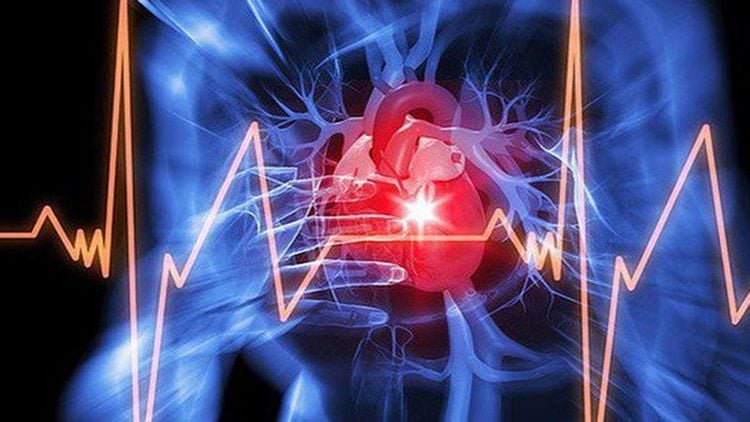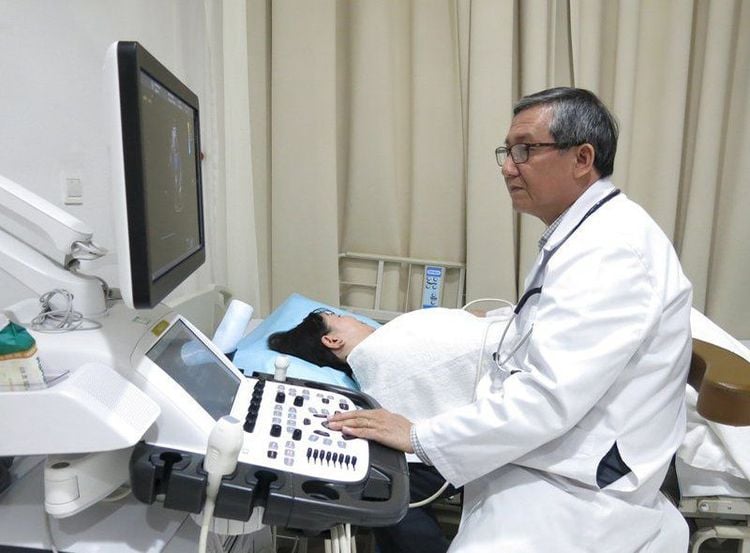This is an automatically translated article.
The article was consulted with Dr. Nguyen Luong Tan - Head of Cardiology Department - Cardiovascular Center - Vinmec Central Park International General Hospital.Interventional cardiology is an important therapy for the treatment of cardiovascular diseases and is increasingly developing in our country. Among them, laparoscopic open-heart surgery to close the ventricular septal defect is the most common technique.
1. What is ventricular septal defect?
Ventricular septal defect is a foreign body belonging to the interventricular septum (this is the septum located between the 2 lower chambers of the heart). This dangerous foreign body can appear anywhere in the interventricular septum.
There are two typical types of ventricular septal defect:
The type with a small septum has a high probability of being able to close on its own without therapeutic intervention, without causing lasting effects on the patient's health. The type of hole that cannot close on its own requires surgical repair and treatment.
2. Common symptoms of ventricular septal defect
The most obvious manifestation of this disease in infants is rapid breathing, difficulty breathing, poor appetite, children refuse to eat, fatigue and pneumonia many times for a long time. Here are the most common symptoms of ventricular septal defect:
Pale skin, especially around the lips and fingernails Shortness of breath or rapid breathing, in many cases shortness of breath even with light exercise moderate or at rest, the patient quickly gets tired when eating or playing or eating Poorly eating, the child is fussy when eating, growing slowly Swollen feet and ankles Heart beat faster than normal If ventricular septal defect only detected until adulthood, may lead to other symptoms of heart failure, affecting the patient's health may appear more signs and symptoms of the disease depending on the size of the ventricular septal defect However, there are also many cases of children with ventricular septal defect without any specific symptoms, only discovered during routine physical examination, many cases are detected when grown up.

Bệnh thông liên thất có thể gây suy tim
3. Causes of ventricular septal defect
The main cause of ventricular septal defect is congenital malformation, many infants have ventricular septal defects but are not detected early because they do not cause any symptoms until they are diagnosed unexpectedly. .
Another rare cause of ventricular septal defect is severe trauma from objects to the chest. For example, a traffic accident with direct or indirect impact from a foreign body on the heart, or repeated trauma can also cause ventricular septal defect.
Some special risk factors for ventricular septal defect are: Asian patients with a family history of congenital heart disease, or other genetic disorders such as Down syndrome ,...
4. Diagnosis of ventricular septal defect
The doctor who monitors the heart with a stethoscope, in combination with the medical history, will ask the patient to perform the following mandatory tests to make the most accurate diagnosis of the disease:
Echocardiography is an important test. Most importantly, indispensable. Transesophageal echocardiography by numbing the patient's esophagus and passing a small tube with an ultrasound device attached through the throat, down to the esophagus and quickly close to the heart. Heart MRI

Siêu âm tim giúp chẩn đoán bệnh thông liên thất
5. Laparoscopic open heart surgery to close the ventricular septal defect
For patients with large ventricular septal defect, surgery is required to repair the damage. The majority of surgical repair of this lesion is open-heart laparoscopic surgery to close the ventricular septal defect.
The doctor will administer anesthesia to the patient and place a small tube that is inserted into a blood vessel to the heart. The device placed through the catheter will be responsible for correcting the defects. The ventricular septal defect is closed with stitches by a small piece of tissue from another part of the heart or from a small metal or plastic cloth.
With this minimally invasive laparoscopic surgery, doctors only partially open the lower sternum, with a relatively short skin incision, about 6cm for an adult patient, and three to four centimeters for an adult patient. pediatric patients, with the help of other medical facilities in laparoscopic surgery.
The biggest advantage of this method to the patient's health is that it causes less trauma to the patient, and less pain after surgery than the old methods. At the same time, minimizing the risk of infection of the incision, especially very aesthetic, especially for girls. In addition, the recovery time after laparoscopic surgery is also relatively fast, helping patients quickly integrate into daily life.
After surgery, the patient recovers quickly and usually does not have any complications. However, hospital and family doctors still need to carry out strict monitoring of the patient's health status, to prevent possible bad signs, especially for patients who are young children. The patient may be asked to repeat echocardiography to ensure that the septal defect is completely closed.
Open heart laparoscopic surgery to close the ventricular septal defect is a factor in improving the quality of life of people suffering from cardiovascular diseases.
Ventricular septal defect can be severe and cause complications, so it should be examined early. Some ventricular septal defects cause pulmonary hypertension and may complicate infective endocarditis or acute heart failure.
At Vinmec Hospital, patients with ventricular septal defect can be intervened to close the ventricular septum through the skin or open heart surgery.
Please dial HOTLINE for more information or register for an appointment HERE. Download MyVinmec app to make appointments faster and to manage your bookings easily.













